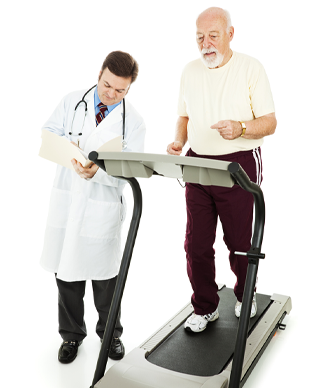Better Fitness Leads to Lower Cancer Risk for Older Men
Men with high midlife cardiorespiratory fitness have a lower incidence of lung and colorectal cancer; however, this association was not seen for prostate cancer.
Image © Lisa F. Young / Shutterstock.com

Men with high cardiorespiratory fitness at midlife-between 46 and 51 years of age-have a 55% lower risk of lung cancer and a 44% lower risk of colorectal cancer compared with men with low cardiorespiratory fitness, according to a new study. High cardiorespiratory fitness was also associated with a lower risk of cancer-specific mortality at age 65 or older. However, this inverse association between fitness and cancer risk was not seen for prostate cancer.
The study authors analyzed baseline fitness data from 13,949 men, as assessed by a medical exam, a cardiovascular risk factor assessment, and an exercise treadmill test, and categorized fitness levels as low, moderate, or high. The men were part of the Cooper Center Longitudinal Study, a prospective observational cohort study of preventive health. The results of the study were published in JAMA Oncology.
The fitness level data were assessed and compiled between 1971 and 2009, and lung, prostate, and colorectal cancer diagnoses and outcomes using Medicare data from 1999 to 2009 were analyzed. Most of the men on the study were white. Men with increasingly higher cardiorespiratory fitness levels had lower body mass indices and lower cholesterol levels, and were less likely to smoke.
After an average of 6.5 years of surveillance, 1,310 men were diagnosed with prostate cancer, 200 men with lung cancer, and 181 men with colorectal cancer.
“The relationship between fitness and prostate cancer risk is controversial,” said study author Susan G. Lakoski, MD, MS, of the University of Vermont. “It is possible that men with higher cardiorespiratory fitness may be more likely to undergo more frequent preventive healthcare screening and/or detection visits and, thus, had greater opportunity to be diagnosed as having localized prostate cancer relative to men of lower cardiorespiratory fitness.”
Lakoski pointed out that men who developed prostate cancer in the current study had a lower risk of ultimately dying of cancer or cardiovascular disease if they were “fit” prior to disease onset. “This speaks to the importance of being ‘fit’ in midlife to improve survival even if a man ultimately develops lung, prostate, or colorectal cancer later in life.”
In the study, men diagnosed with cancer at about age 65 with a high midlife fitness level had a 32% risk reduction of cancer-related death among the men who developed lung, prostate, or colorectal cancer. These men also had a 68% reduction in cardiovascular disease–related death compared with those who had a low fitness level at midlife.
The association between cardiorespiratory fitness and cardiovascular disease is now established, but how physical fitness affects cancer onset and prognosis is not clear.
According to the authors, this is the first study to investigate whether measures of exercise activity in relatively healthy middle-aged adults can predict risk of primary cancer or cancer-specific death in those who are diagnosed with cancer.
The finding that men diagnosed with cancer have a lower risk of dying either from cancer or cardiovascular disease is important, noted the authors, as patients with earlier-stage cancer now have “sufficient survival to be at risk for non-cancer competing causes of mortality, particularly cardiovascular disease.”
“Our findings indicate that cardiorespiratory fitness provides cancer risk prediction information beyond these established lifestyle risk factors,” said Lakoski. “These findings provide support for the utility of cardiorespiratory fitness assessment in preventive healthcare settings and possibly following a diagnosis of cancer.”
“Individuals with higher cardiorespiratory fitness are expected to have lower circulating concentrations of metabolic and sex steroid hormones, enhanced immunity, and lower inflammation and oxidative injury,” she added.
While the current study supports physical fitness as a preventive health measure, further studies are needed to understand the threshold level of cardiorespiratory fitness necessary to provide a cancer-preventive effect and a reduction in cancer mortality. Future studies also need to address these effects in minority populations and the role of physical fitness in cancer risk for women.